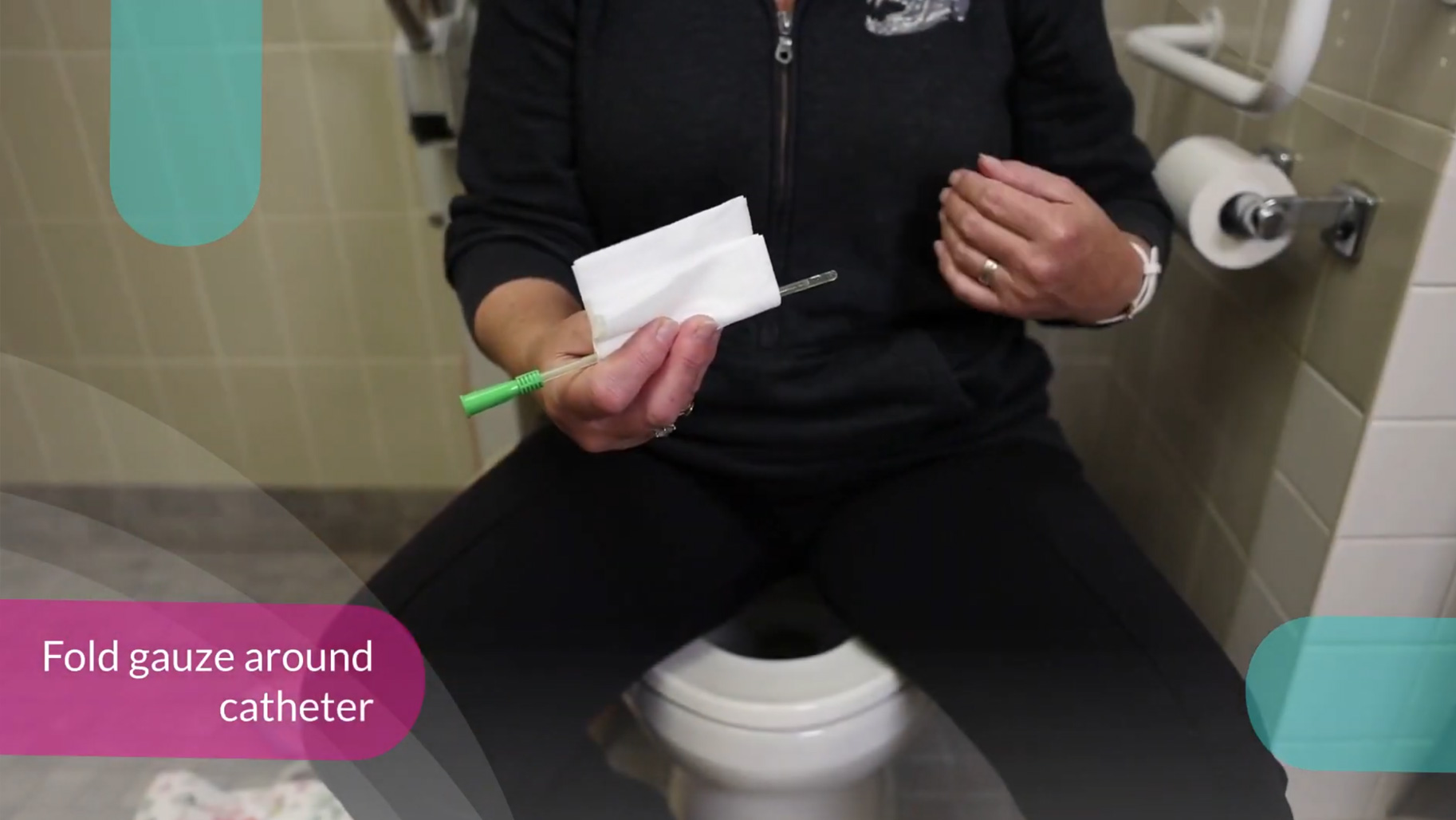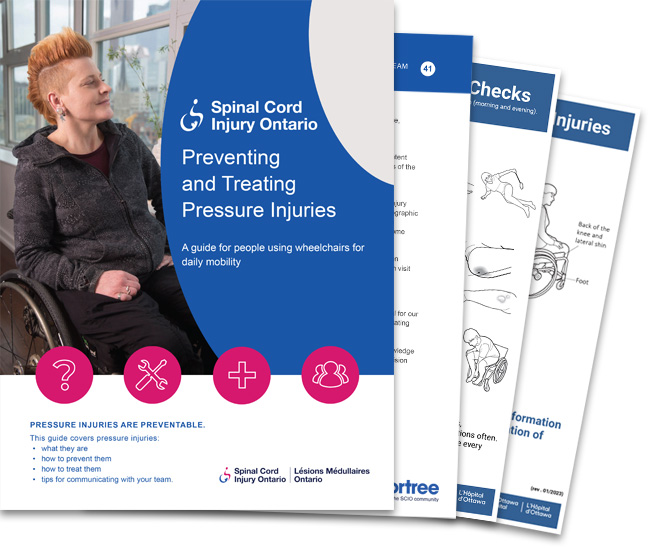People with a neurogenic bladder, a urinary condition experienced by people who lack bladder control due to a brain, spinal cord or nerve issue, often use an intermittent catheter to pee. Through this video series, you will see people demonstrate how to self-catheterize in different settings, and how to use the gauze and landmarking techniques to help guide the catheter in a precise and pain-free way.
The demonstrations in this series will serve as a good general guide to different scenarios for self-catheterization. This video series and these demonstrations are intended to supplement the direction and ongoing support provided by your healthcare team, not replace it. We encourage you to reach out to your own community of people living with the same disability to get valuable insights and support from people with lived experience.
It’s important to keep in mind everyone’s experience with self-catheterization will be different. This is because your own individual physical mobility, hand dexterity, and your location and positioning can all impact the process. Everyone’s body is a little different, and almost always different from images you might see in clinical or formal learning resources.
These demonstrations of positioning and placement of IC supplies are completed by people with lived experience with spinal cord injury doing ICs on a daily basis. The only part of the process we omit is the insertion of the catheter into the urethra as people are doing the demonstrations with their clothing on. This is in accordance with our content guidelines at Spinal Cord Injury Ontario (SCIO).
Actual insertion of a catheter is shown in the video provided by Coloplast, “How to use a catheter for women in a wheelchair – Coloplast SpeediCath® self cathetarization.” The Coloplast animated video will help you get a clearer idea of the general area of insertion and also an internal view, so you can get a sense of where the catheter’s going once inserted. The Coloplast animated video is available here: How to use a catheter for women in a wheelchair…
The first step of self-catheterizing is to ensure you have access to a clean environment and have all the required personal cleaning supplies organized before you begin the process. You may not always have access to a setting you know is perfectly clean, like you’ll see in the public washroom demonstrations. But there are still things you can do to help limit your exposure to bacteria. We’ll touch on this key concept more during each demo.
We hope you enjoy this video series and watching these demonstrations. If you have any questions about what you learn, be sure to reach out to your healthcare team or service and resource providers like Spinal Cord Injury Ontario.
We would like to acknowledge and thank the people with lived experience who contributed their insights and tips to the development of this video series:
- Lubna Aslam, former Spinal Cord Injury Ontario staff
- Jaspreet Dhaliwal, Peer Support Program Coordinator, Spinal Cord Injury Ontario
- Michel LeFeuvre-Watson • Jacqui Kinahan, Peer Support Volunteer, Spinal Cord Injury Ontario
- Nancy Xia, Video Content Developer, Spinal Cord Injury Ontario
- Julie Watson, Peer Support Program Coordinator, Spinal Cord Injury Ontario
We would also like to thank UHN Toronto Rehab – Lyndhurst Centre staff who provided clinical subject matter expertise, source content and expert review of this video series:
- Sandra Mills, Patient Education and Engagement Lead, UHN – TRI Lyndhurst Spinal Cord Rehab Program
- Hannah Hollett, Clinical Coordinator Intrathecal Baclofen Program, UHN – TRI Lyndhurst Spinal Cord Rehab Program
- Dr. Cathy Craven, BA, MD, MSc, FRCPC, FASIA. Physical Medicine and Rehabilitation, Toronto Rehabilitation Institute Chair in SCI Rehabilitation; Medical Director , Spinal Cord Rehabilitation Program, UHN; Senior Scientist, KITE Research Institute, University Health Network; Professor, Department of Medicine, University of Toronto.





